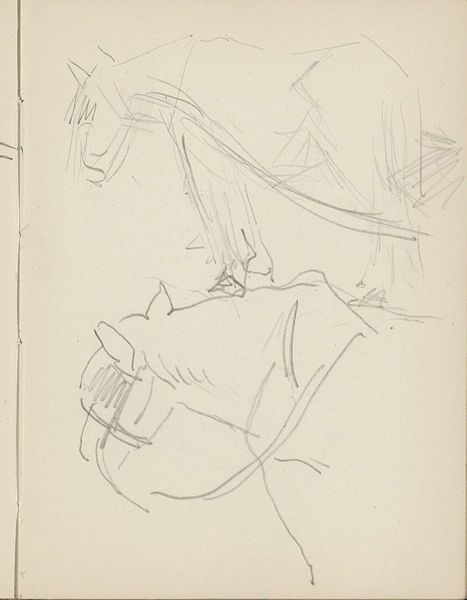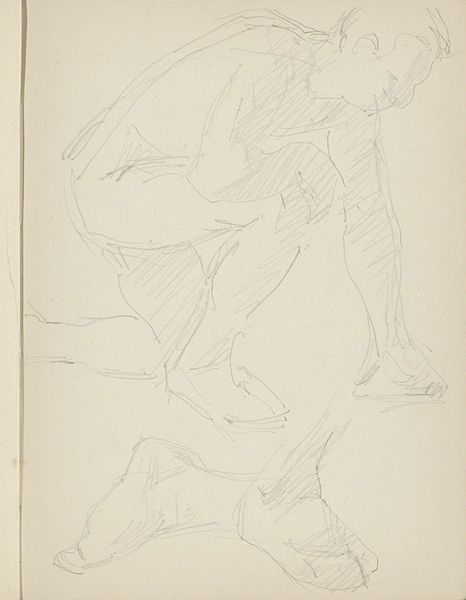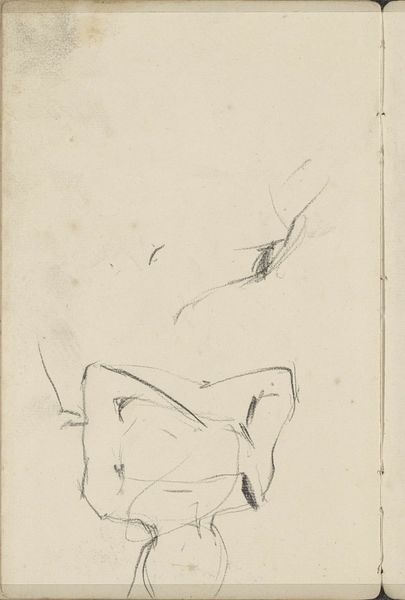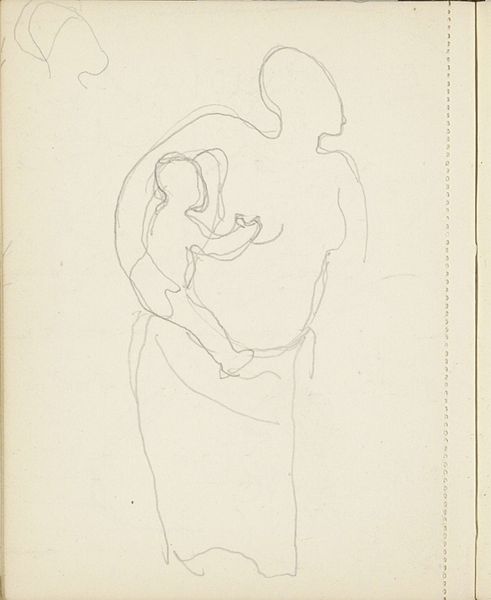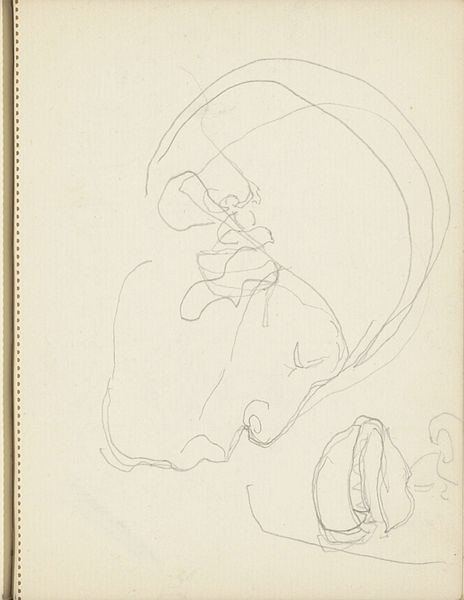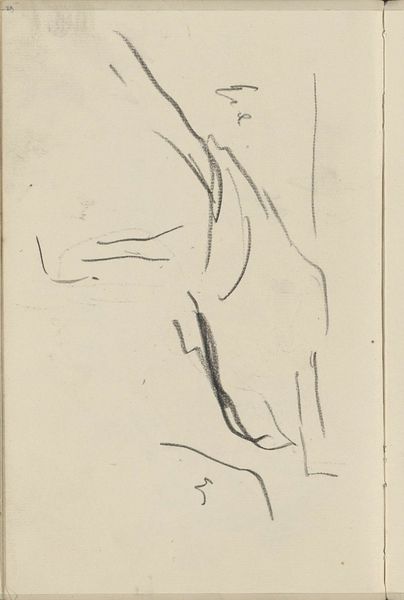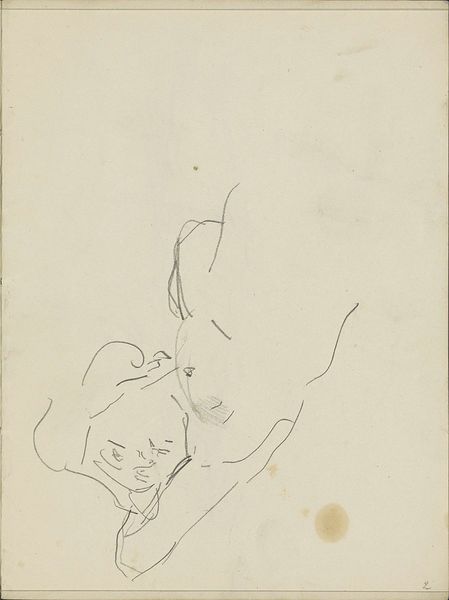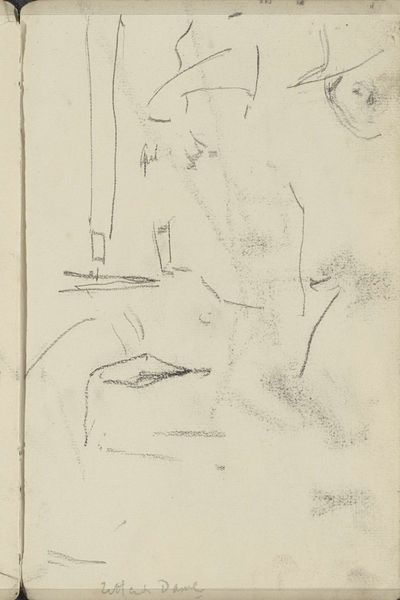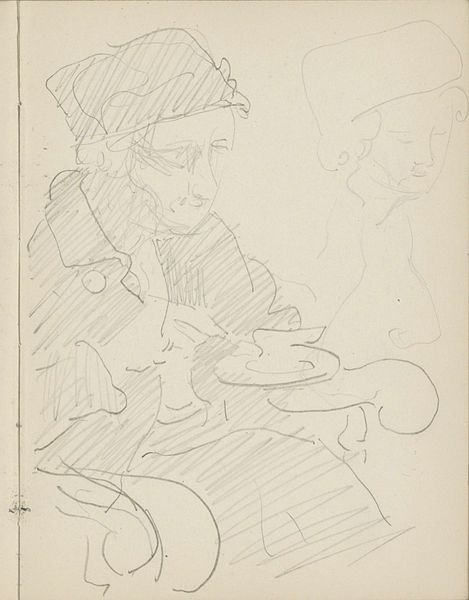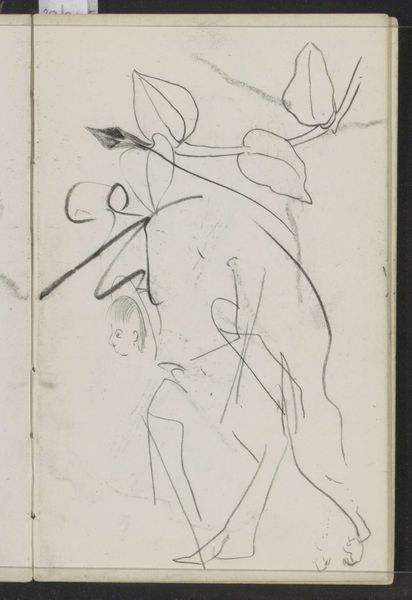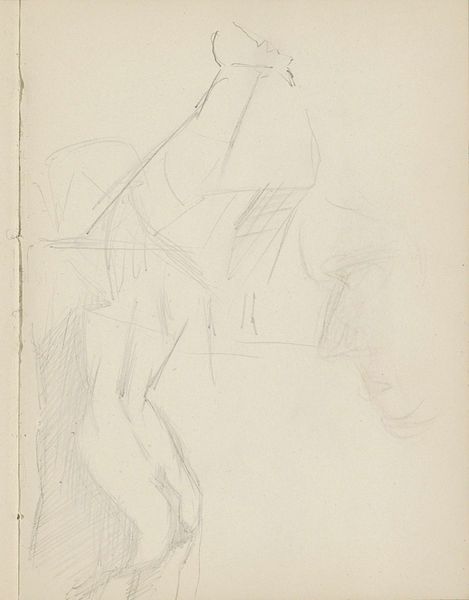
drawing, pencil
#
drawing
#
imaginative character sketch
#
light pencil work
#
pen sketch
#
pencil sketch
#
figuration
#
personal sketchbook
#
idea generation sketch
#
ink drawing experimentation
#
sketch
#
pen-ink sketch
#
pencil
#
line
#
sketchbook drawing
#
sketchbook art
Copyright: Rijks Museum: Open Domain
Editor: Reijer Stolk's "Katachtigen," likely made sometime between 1906 and 1945, is a captivating series of sketches done in pencil. I find the lines so delicate, almost tentative, like Stolk was thinking aloud on paper. What do you make of these ghostly feline forms? Curator: Ghosts indeed! It’s interesting how a few simple lines can evoke the essence of a creature. For me, this isn't just about cats; it's about seeing. It's that moment of fleeting perception, when you catch a glimpse of something out of the corner of your eye and your mind tries to fill in the blanks. Like haiku poetry, Stolk gives us just enough to ignite our imagination. I wonder, does it remind you of a personal sketchbook? Editor: Yes, absolutely! It feels very immediate and private. It’s like we're looking at Stolk's raw ideas, rather than a finished piece. All that tentative sketching makes the image approachable, maybe even intimate. Curator: Precisely! The visible process becomes part of the work's beauty. He doesn’t hide the search, the revisions. It's honest, like a jazz musician improvising a melody. A visual improvisation. Tell me, how does the incomplete quality affect your understanding of figuration here? Editor: Well, because the cats aren't fully realized, they become almost archetypal. It’s less about specific cats and more about the idea of "cat-ness." Curator: Ah, that’s astute! Stolk encourages us to consider the inherent characteristics that make a cat a cat – its posture, its sleekness, its mysterious aura. I think I'll see sketches in a new way now. Editor: Me too. It's amazing how much feeling can be conveyed with so few lines. It highlights the power of suggestion in art.
Comments
No comments
Be the first to comment and join the conversation on the ultimate creative platform.
